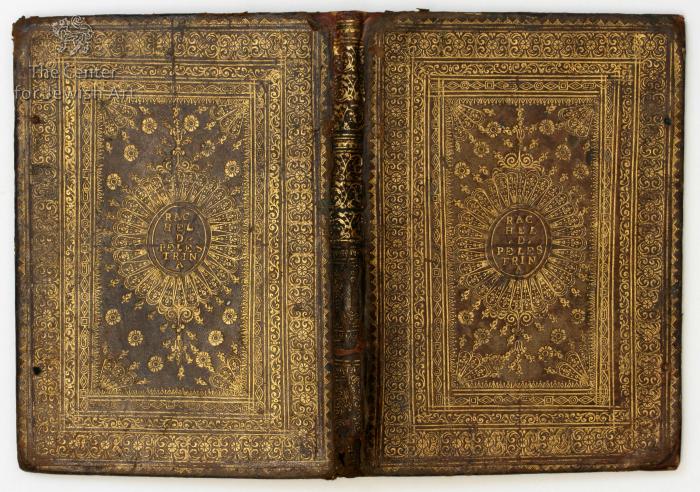Obj. ID: 39431 Mitzvot Nashim Melumada by Benjamin of Harodna Slonik, Venice, 1652

sub-set tree:
This text was prepared by William Gross:
A halakhic compendium for women on the three mitzvot specific to them: niddah (family purity), challah and candlelighting. The book was written in Yiddish by the polish Rabbi Benjamin D'Arodono Slonik (c.1550-c.1619), who studied under the Maharshal, the Rema, and R. Nathan Nata Spira. R. Slonik lived in Cracow, then Russia (Lita), and served as a rabbi in Silesia and in Podhajce. His Mitzvot ha-Nashim, first published in Cracow, 1577, has been an authoritative, popular and much reprinted work. This edition is an Italian translation by R. Jacob Halpron.
The book is bound in a most rare and wonderful morocco binding, elaborately gilt-tooled with scrolls, flourishes and geometirc designs, and the name of the owner, a Jewish woman by the name of Rachel Di Pelestrina, embossed on both sides. To find specific all-Jewish bindings from the 17th century is highly unusual.
Translated by Rabbi Jacob Halpron
Owned by: Rachel D. Pelestrina









